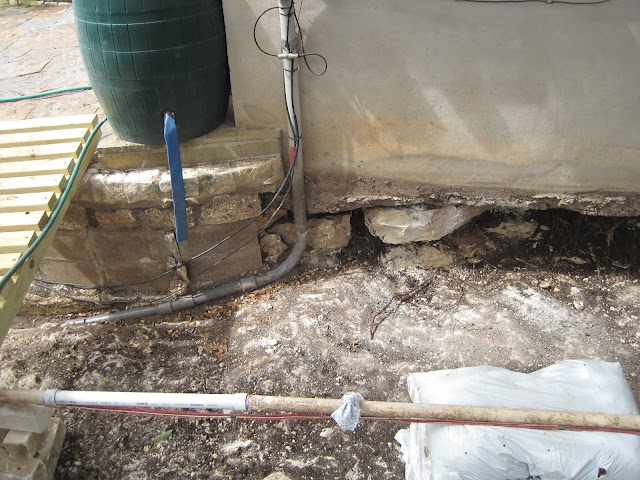But in the meantime, we need to dig up most of this monkey grass to expose the irrigation water supply line so we can lower it to bedrock. Since we don't want to just discard the monkey grass, I will transplant it again.
In theory this is just a temporary transplanting, until I can finish digging up this bed, Zone 2, and transplant the monkey grass back, but the list of tasks includes digging up the water supply line, and then digging down to bed rock, laying the water supply line on the bedrock, which requires changing the two zone controls (for Zone 2 and Zone 3), putting the telephone and cable lines in the conduit, finishing the pathway (which defines one edge of Zone 2, clearing out any remaining rock in Zone 2, filling it up with dirt, putting in new underground drip irrigation for Zone 2, and then putting the monkey grass back. So it may be several months.
We started by putting it around the greenhouse, both on the East side
behind the greenhouse, and along the West side.
But this was not enough space, so we also used part of what is supposed to be the lawn alongside the walkway, since it had been dug up and had good dirt dumped there, at least until later.
We used some limestone blocks to define a lower edge of this area.
With favorable weather, we hope that this grass will do well, and we can put it into its final home once we finish Zone 2.








